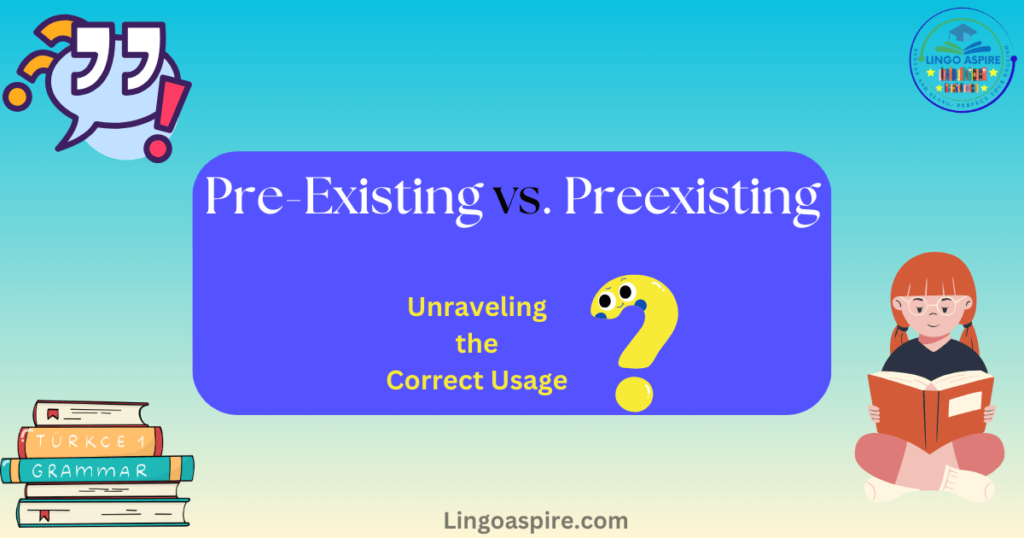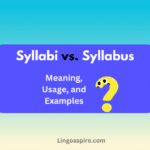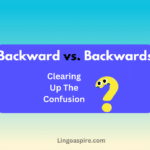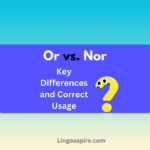In the English language, small details can significantly impact the clarity and professionalism of your writing. This is particularly true for terms like Pre-Existing vs. Preexisting Though seemingly trivial, the correct usage of these terms can enhance the readability and precision of your text. This article delves into the nuances of these terms, offering guidance to ensure you use them appropriately in any context.
Understanding the Basics of Pre-Existing vs. Preexisting
Let’s start with the fundamentals. The term “pre-existing” often appears with a hyphen, while “preexisting” is written in a closed form, without a hyphen. Both terms refer to something that existed before another event or point in time, commonly used in various fields, especially medical and legal documents. However, the choice between these forms depends on several factors, including grammatical rules, style guides, and the intended audience.
Historical Perspective
The evolution of English has seen many compound words lose their hyphens over time. Initially, “pre-existing” was the more common form, emphasizing the prefix “pre-” which means before. Historical texts show that writers used the hyphen to clarify that “pre-” was modifying the following word rather than serving as a standalone word. Over time, as familiarity with such terms grew, the need for a hyphen diminished, giving rise to the closed form “preexisting.”
Grammatical Rules
Understanding when to use a hyphen in compound words involves recognizing grammatical rules that dictate clarity and meaning. Generally, hyphens are used in compound modifiers when they precede a noun, for example, “a well-known artist.” This rule helps to prevent misreading; without the hyphen, the reader might stumble over the meaning. Applying this to our terms, “pre-existing condition” might be clearer than “preexisting condition,” particularly in formal writing where clarity is paramount.
Style Guide Recommendations
Different style guides offer varied recommendations on the use of hyphens in compound words. For instance, the APA (American Psychological Association) style recommends using a hyphen for compound adjectives before a noun but not after the noun. This guide helps writers achieve consistency and clarity in their work. These guides generally suggest using “pre-existing” when the term precedes a noun but might accept “preexisting” when used after the noun or when the term has become widely accepted as a closed form.
Practical Examples: Using “Pre-Existing vs. Preexisting” in Context
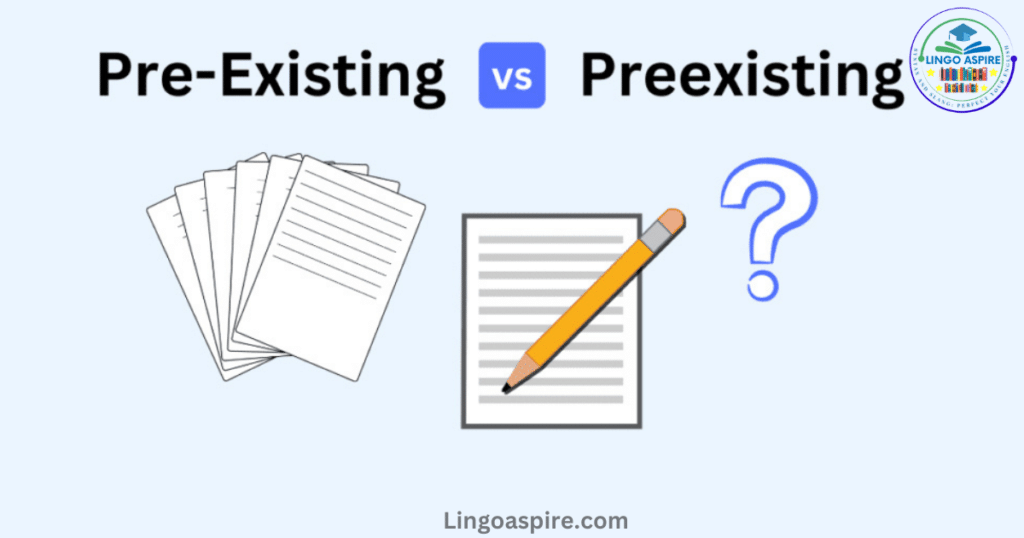
When considering how to use “pre-existing” and “preexisting” in various contexts, examples can clarify their appropriate application and help writers choose the right form based on the setting and purpose of their writing. Here are some examples to illustrate the usage of each term in different contexts:
Medical Documentation
- Pre-existing: “The patient was denied coverage for the surgery due to a pre-existing condition that was not disclosed at the time of insurance enrollment.”
- Preexisting: “Medical records indicate that the preexisting arthritis might influence the treatment options available.”
Legal Contracts
- Pre-existing: “Clause 14 stipulates that any obligations arising from pre-existing agreements shall remain enforceable under this new contract.”
- Preexisting: Rarely used in legal documents to maintain utmost clarity.
Academic Publications
- Pre-existing: “Recent studies challenge the theory, pointing to pre-existing data that suggest a different causation.”
- Preexisting: “Scholars often overlook the influence of preexisting cultural norms on modern legal systems.”
Technical Manuals
- Pre-existing: “All upgrades must be compatible with the pre-existing software architecture to avoid system conflicts.”
- Preexisting: “The technician must check for preexisting faults in the wiring before installing the new system.”
Everyday Writing
- Pre-existing: “Before moving into the apartment, the landlord noted the pre-existing damage to the kitchen tiles in the lease agreement.”
- Preexisting: “Many users find it easier to integrate new apps into their preexisting workflow without significant changes.”
The Role of Context
The choice between “pre-existing” and “preexisting” can also depend on the context and audience. In more formal contexts, such as scholarly writing or official documents, “pre-existing” might be preferred for its clarity and formality. In contrast, in informal writing or digital communication, “preexisting” may be more common as it reflects a modern, streamlined approach.
Expert Opinions
Linguists and editors often emphasize consistency in usage. Once you choose between “pre-existing” and “preexisting” within a document, maintaining that choice throughout the text is crucial for professionalism and readability. Language experts also recommend considering the preferences of your audience and the conventions of the genre in which you are writing.
Comparing “Pre-Existing vs. Preexisting”: Usage Across Different Contexts
When discussing “pre-existing” versus “preexisting,” it’s helpful to understand their uses in different contexts and how style preferences or grammatical rules might influence the choice between these two forms. Here’s a detailed table outlining the contexts in which each variant is typically preferred and the implications of choosing one over the other:
| Context | Use of “Pre-Existing” | Use of “Preexisting” | Considerations |
|---|---|---|---|
| Medical Terms | Commonly used in formal documentation and insurance policies. | Less common, but used in more modern or streamlined texts. | “Pre-existing” is often preferred for clarity and formality in medical documents. |
| Legal Documents | Preferred in formal legal contexts for clarity. | Rarely used, to avoid ambiguity. | The hyphen in “pre-existing” helps ensure the meaning is immediately clear. |
| Academic Writing | Used when following strict grammatical standards. | Used in less formal academic pieces or modern publications. | Choice often depends on the style guide being adhered to by the publication. |
| Technical Writing | Preferred in detailed technical specifications and reports. | Found in casual technical communications or internal memos. | The use of “pre-existing” can clarify complex information more effectively. |
| General Usage | Used by individuals who adhere to traditional English rules. | Increasingly used in informal writing and digital communication. | Writers may choose “preexisting” for a more contemporary, concise style. |
Synonyms for Pre-Existing vs. Preexisting
Here’s a list of synonyms for the term “pre-existing,” which can help diversify your vocabulary when discussing concepts related to conditions or circumstances that existed before a certain point in time:
- Antecedent – Refers to something logically or chronologically preceding.
- Preceding – Occurring before or in front of something else, in time, place, rank, or sequence.
- Prior – Existing or coming before in time, order, or importance.
- Former – Having been previously; past.
- Previous – Existing or occurring before in time or order.
- Earlier – Happening or existing before a specified time or event.
- Anterior – Coming before in sequence or time; preceding.
- Established – Having been in existence for a long time and therefore recognized and generally accepted.
- Historic – Famous or important in history, or potentially so.
- Long-standing – Having existed or continued for a long time.
Conclusion
In summary, both “pre-existing” and “preexisting” are correct, depending on the grammatical, stylistic, and contextual considerations. Writers should aim for consistency in their choice to ensure clarity and professionalism in their communication. By understanding these nuances, you can enhance your writing’s effectiveness and adaptability across various contexts.
Sources
1. The Chicago Manual of Style
This comprehensive guide is essential for writers, editors, and publishers, particularly in the United States. It offers extensive guidelines on grammar, punctuation, style, and using hyphens in compound words.
2. Merriam-Webster’s Dictionary
As a respected authority in American English, Merriam-Webster offers definitions, pronunciation guides, and word usage examples, including notes on variations in spelling and punctuation.
3. Purdue Online Writing Lab (OWL)
Purdue OWL is a renowned educational resource offering extensive writing guides and resources on various aspects of English writing, primarily used by students and educators.

